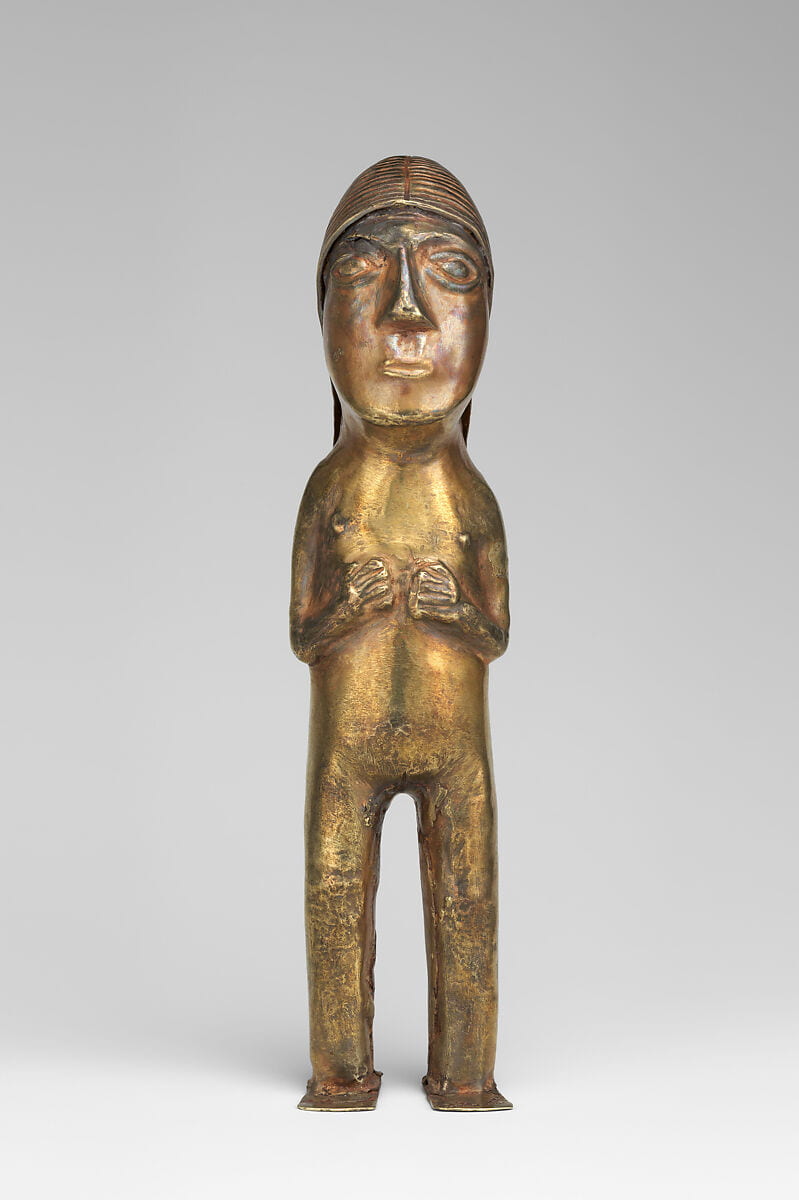Few cultures have achieved the level of mastery and reverence for precious metals as the Inca. The significance of precious metals, particularly gold and silver, in Inca society extended far beyond their material value. These metals were imbued with spiritual significance, connecting Inca civilians to the divine realm. These precious metals are symbols of the sun, moon, and lightning, representing powerful forces of nature. Their role in Inca art and metalwork was often to serve as expressions of the Inca’s cultural values, particularly their understanding and standards of beauty. In Inca cosmology, these precious metals were not only valuable earth substances, but sacred materials capable of bridging the gap between the earthly realm and the deities.

Female figurine, Inca, ca. 1400–1533
Although the significance of these materials is portrayed strongly by their spiritual nature, Inca metalwork depicting human figures, llamas, and even maize are more common material and visual sources available for analysis. This female figure exhibits the intricate connections between Inca metalwork, spiritual practices, and beauty ideals. This particular figurine is made up of several layers of hammered sheet metal, composed of gold and silver. Her arms and hands are pulled close to her chest, while her hair is sleekly pulled back. Each of her more detailed parts, such as the face, hands, and genital region, were shaped and engraved before the final assembly. Her association with capac hucha, a ritual practice which included sacrifices of metal figurines like this one, represents the Inca devotion to both beauty and spirituality through their sacrifice of art.
In regard to the global connections in this context, consider that Inca artists built upon styles and techniques developed by artists and metalworkers across various locations in the Andean region. Metalwork itself is a practice central to Andean tradition, one that spreads across a vast expanse of time as well as the broad Andean landscape. For example the Inca technique that sought to incorporate copper alloys to enhance the lustrous appearance of silver and gold spread throughout the Andes and much of the rest of Mesoamerica. The Inca’s meticulous attention to detail and regard for a certain standard of beauty likely also heavily influenced surrounding Mesoamerican art and metalworks. During the colonial era, the appreciation for Andean and Inca metalwork and cultivation for precious metals by Spaniard colonizers is evident across many first hand accounts, although it is important to consider their potential biases and colonial undertones.
Beyond the classic value of silver and gold there is a deeply seeded cultural identity symbolized by these metals. Through their metalwork, the Inca expressed their complex understanding of beauty as a sacred principle that has the power to unite the earthly and divine.